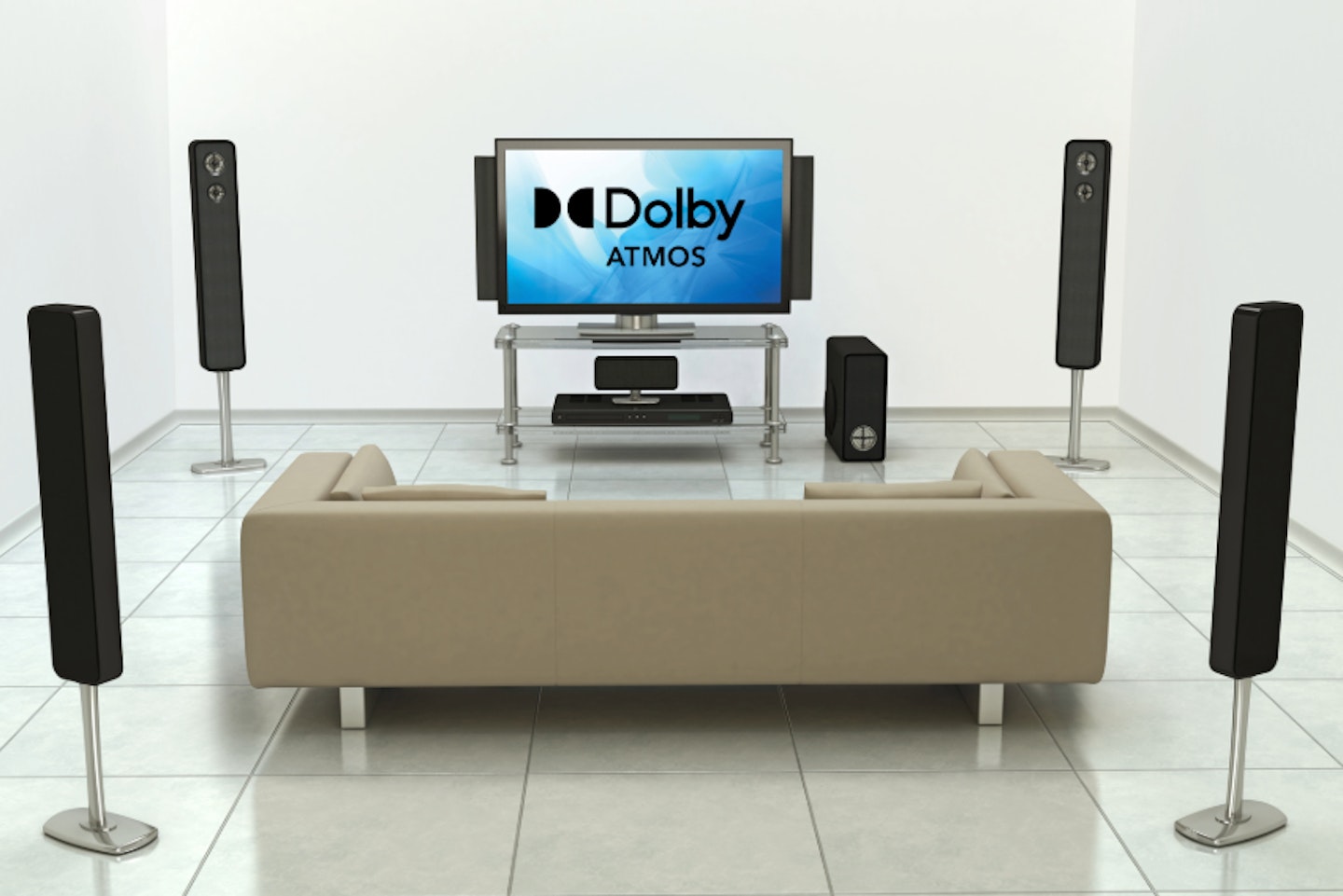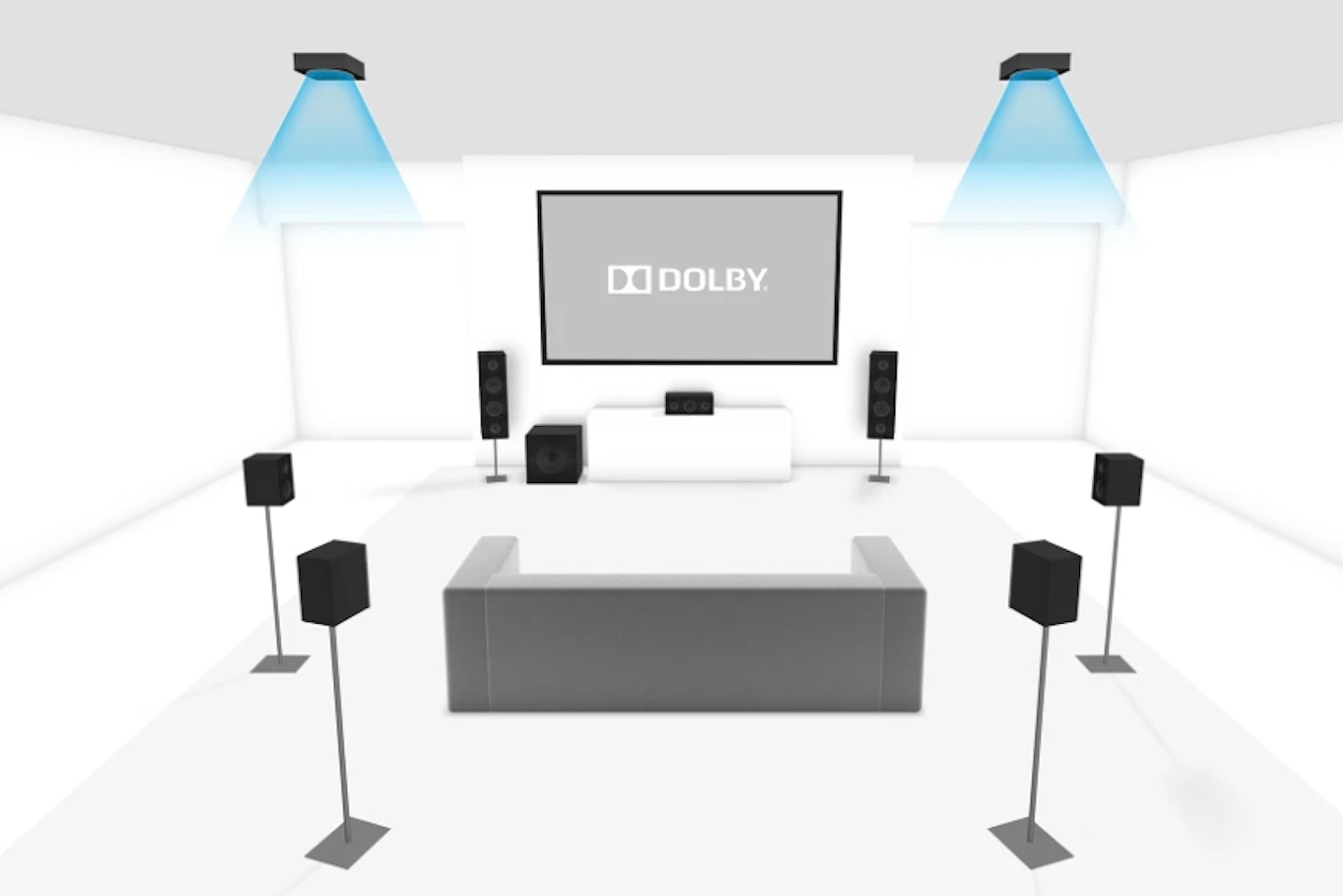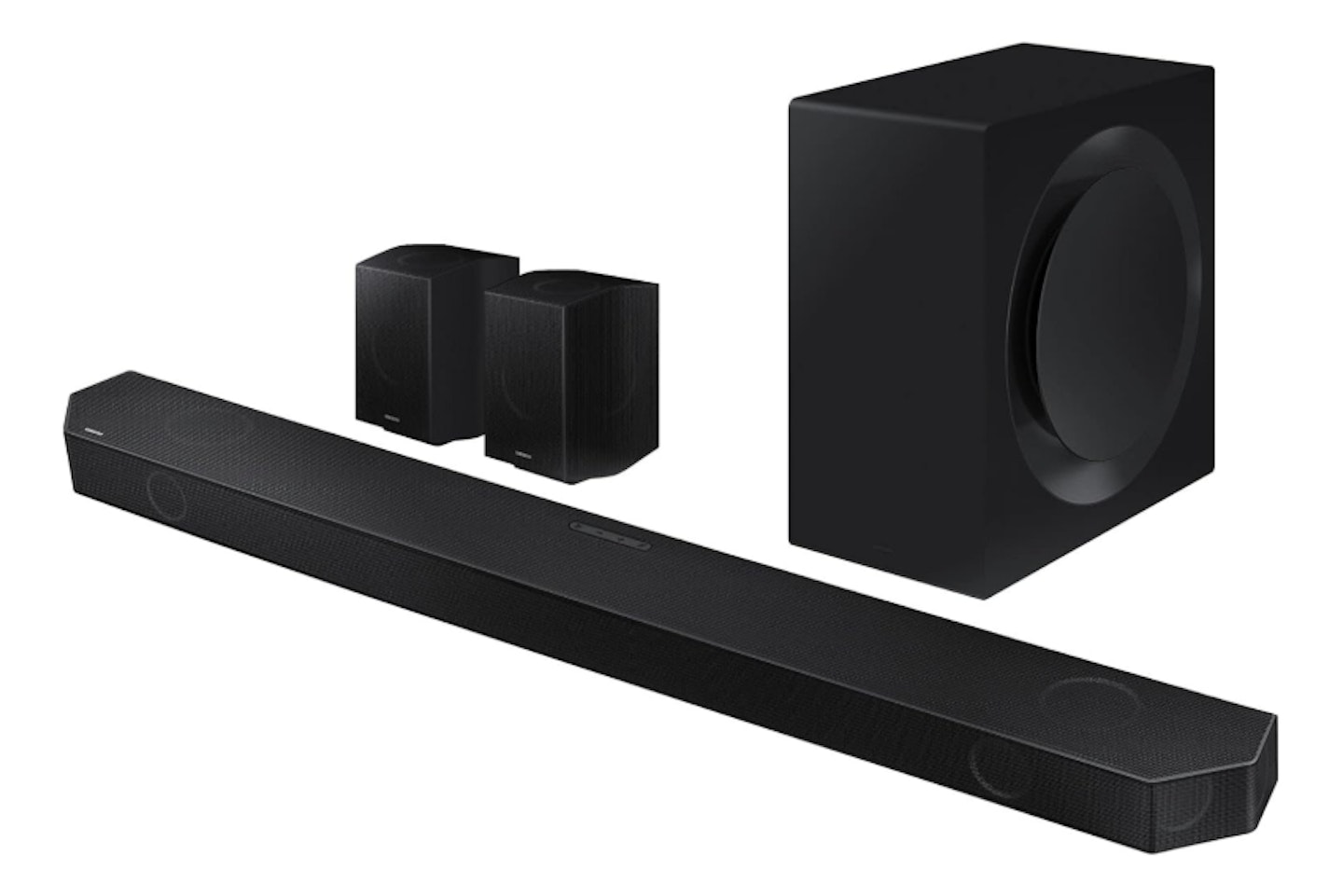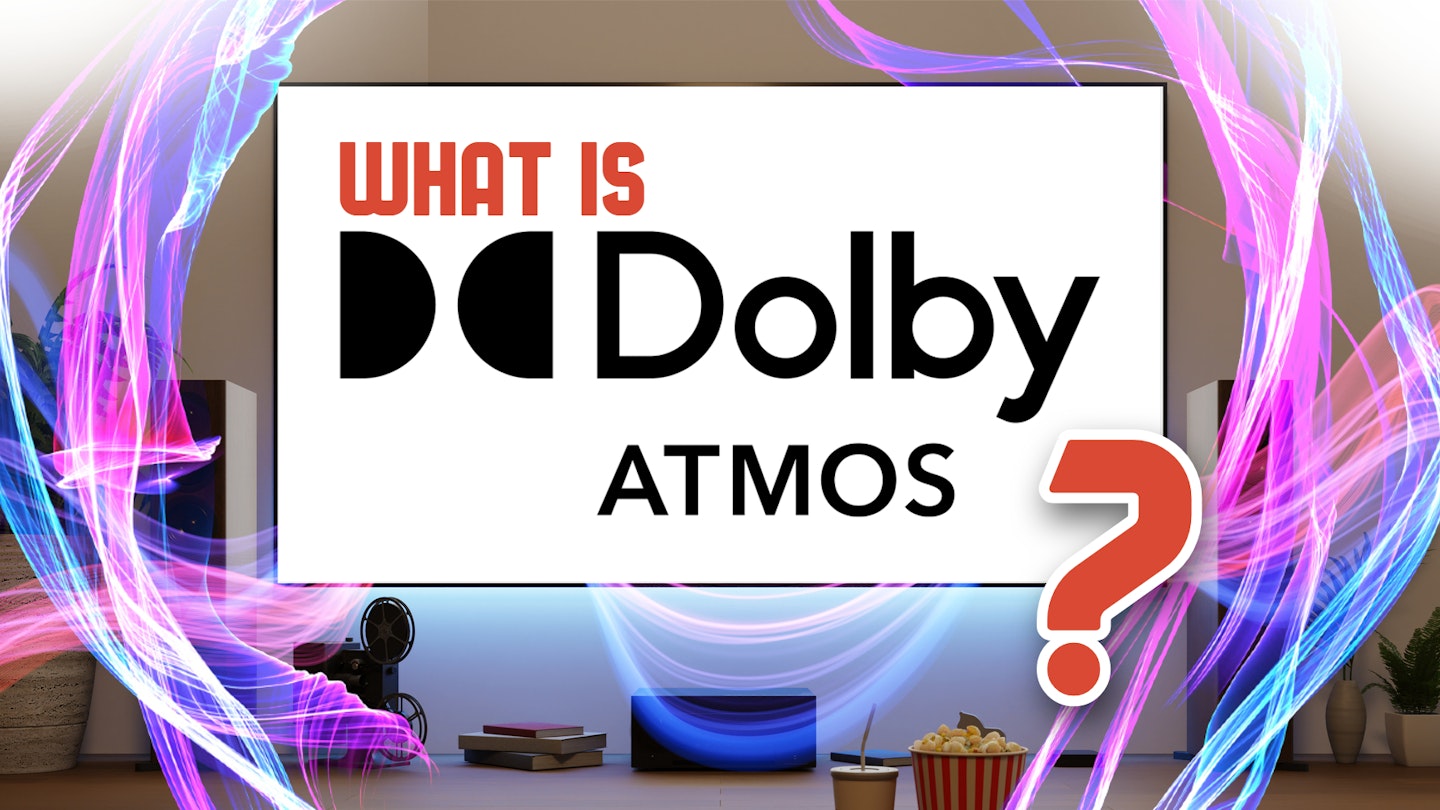If you think you’ve heard the best soundbars and speakers for home cinema, you may need to think again. Anyone who’s dabbled in a standard 5.1 surround sound speaker setup in their lounge is in for a surprise. A seasoned movie fan who has the best TV speakers known to man (plus an expensive subwoofer) will definitely want to invest in spatial audio. But what is Dolby Atmos - and why does it matter for watching movies?
Dolby Atmos: The basics
So, what's it all about? Well, think of any movie you've seen recently. If you've seen it at the cinema you may have noticed that the sound effects seem to come from the right place to match the action on-screen. Speech seems to come from the direction of the person speaking too, and the sound surrounds you in a way that makes you feel like you're in the middle of the scene. Dolby Atmos delivers this kind of surround experience with more precision and realism than ever.
The net result? Your movies really do come to life. The roar of jets as they pass over your head and bank behind you in Top Gun: Maverick, the creak of metal and flooding water in The Abyss, the explosions and encompassing cityscape in The Batman. It’s all about bringing movies to life in your home - in a way that you’ve never experienced outside of the cinema. Until now.

What is spatial audio?
To understand how Dolby Atmos works, let’s look at the concept that underpins it - spatial audio. As the name suggests, this innovative technology can accurately place isolated sounds within the available space. It’s known as object-based audio. A traditional home cinema setup might have seven speakers, a subwoofer, and two more speakers mounted in the ceiling; But, despite piping sound into the room in three dimensions, this isn’t true spatial audio. To get object-based audio to work you’ll need a little more than just some extra speakers.
In terms of entertainment media like movies and TV shows, spatial audio relies on three things:
• A playback device (such as a BluRay player or streaming service) that supports content with an Atmos soundtrack
• An amplifier that can decode the Atmos soundtrack
• A speaker setup that works with the amplifier for proper Atmos delivery

What is Dolby Atmos?
Dolby has been at the forefront of professional audio processing for decades. It's famous for its noise-reduction feature that made it into every hi-fi in the '60s, '70s and '80s. It launched Dolby Atmos in 2012 and it’s since become the de facto standard for creating immersive 3D soundscapes. It’s one of a small handful of spatial audio formats widely adopted by the entertainment industry. As such, Atmos makes its way onto our Blu-Ray discs and streaming services to augment many of our favourite movies and shows.
In cinemas, you’re likely to have experienced it over a 9.1-based sound system (that would typically be nine speakers on the horizontal plane and one sub - plus more mounted above). Now movie fans can get their hands on similar speaker setups. So, Atmos really does let you bring the cinema experience home.
Having been around for a decade now, Atmos has now become more affordable. And that means that bringing immersive spatial audio to your home cinema is within everyone’s reach. Those who already have surround sound speakers dotted around their living room will be well prepared for Atmos, but the 3D sound technology has also made it into advanced soundbars with multiple highly directional speakers to better aim sounds into the room.
How does Dolby Atmos work?
The extra data (metadata) that is transmitted along with the movie’s original soundtrack is where the magic happens. That original audio stream might be encoded as a Dolby Digital or DTS 7.1 Surround track. And yes - without Atmos that sound would be impressive enough when heard over a 7.1-based home cinema setup. But, it’s the addition of that spatial metadata that really takes your movie’s audio immersion to the next level.
At the time of writing, Dolby Atmos supports a staggering 64 individual speakers. But of course, most of us won’t have a 64-speaker setup at home. Most Atmos content we can get at home is encoded with a 7.1 or 9.1-based speaker system in mind. So, that’s affordable and not too different from many theatres.
But how about those spatial sound objects? Well, Atmos can place up to 128 of them around your room at any one time. That’s the power of Atmos - no wonder it’s such an astounding experience. It does this by interpreting a room’s existing speaker coverage as a three-dimensional space. By mapping certain sounds to 3D coordinates, an Atmos-enabled home cinema system will place that sound where it belongs in terms of what you're watching. The end result is that your room becomes a highly precise three-dimensional sound canvas.

What equipment is best for Dolby Atmos?
Naturally, the more speakers you can have the better. As we mentioned earlier, theatres often use a 9.1-based speaker setup. Available for the home, a 9.1 speaker layout adds additional height speakers at the front - although more can be added in the ceiling for a more cinema-like setup. That said, the majority of Blu-ray discs and streaming Atmos movies have 7.1-based sound - making a 7.1.2 Atmos speaker system a popular choice - the last '2' being those ceiling speakers.
In terms of the speakers themselves, there are plenty of Atmos-compatible models out there. Standard hi-fi speakers for music aren't always up to the task. Many Atmos speakers have drivers that can be angled for more precision. The tweeters in ceiling-mounted Atmos speakers are often positionable like this. As your Dolby Atmos setup is all about creating an all-enveloping soundscape, the placement is crucial. The Dolby website has an excellent guide to Dolby Atmos speaker configurations to help you plan your layout.

Can I get Dolby Atmos on a budget?
There are many excellent TV soundbars that incorporate a 7.1.2 (or more) speaker setup. They have internal amplifiers that can decode Atmos. As with all surround sound setups, the more speakers you have to reproduce the sound the better the effect.
But, there are great Atmos-enabled soundbars with just two channels - a left and right front-firing speaker setup. For Atmos, they have two more up-firing speakers that reflect from the ceiling and give the illusion of physical overhead speakers. Altogether, despite only having two main channels, you're still getting object-based spatial sound. So, you really don’t need to invest a serious amount of time or money to get a taste of the excellence that Dolby Atmos offers.

Where can I find movies and TV shows with Dolby Atmos soundtracks?
Aside from purchasing Blu-Ray discs, you can also get Atmos content on selected titles from Netflix, Apple TV, Amazon Prime and other major streaming platforms. Music fans can also find concerts with Atmos soundtracks for that live event experience.
Chris Duffill is a Tech Product Writer for What's The Best. His background includes writing, editorial, marketing, design, video production and photography.
He specialises in home entertainment and audiovisual tech, including speakers, amplifiers, turntables, streaming media players, and TVs. He is also one of our resident experts in computing (PCs, tablets, smartphones, smartwatches), DSLR photography and all kinds of digital cameras. He also writes about retro gaming, game consoles and various electronic gadgets. If it plugs in, lights up or makes a noise, he’ll write about it.
Subscribe to the What’s The Best Newsletter to keep up to date with more of the latest reviews and recommendations from the rest of the What’s The Best team.
